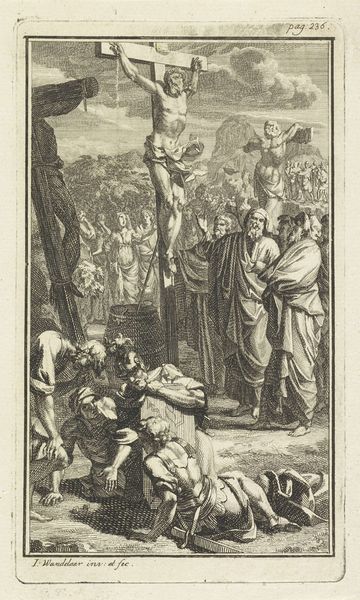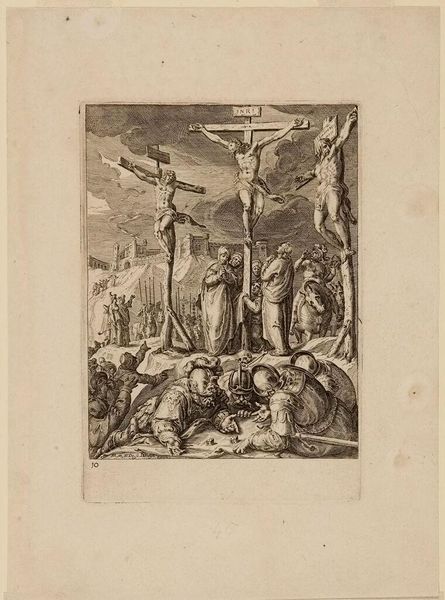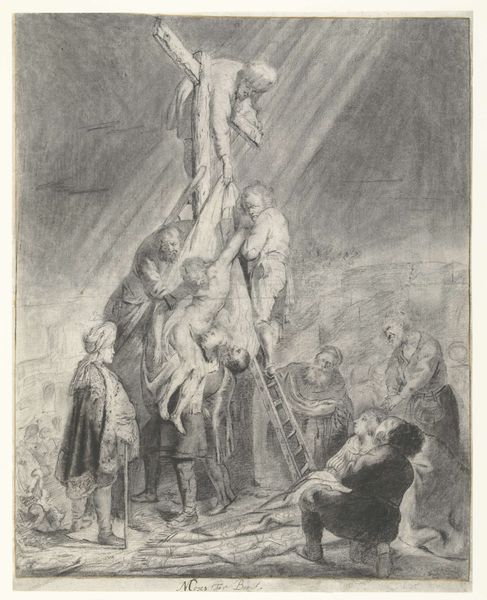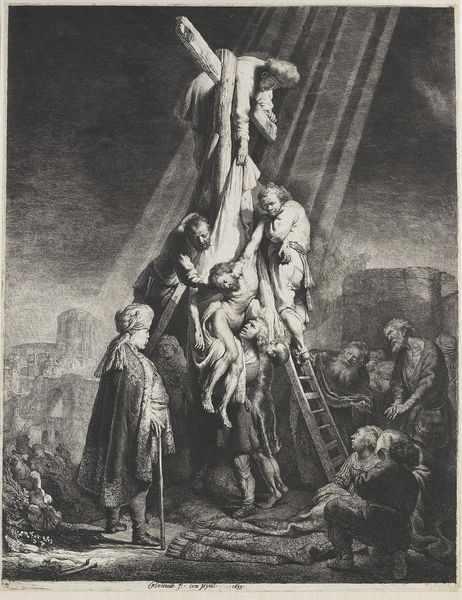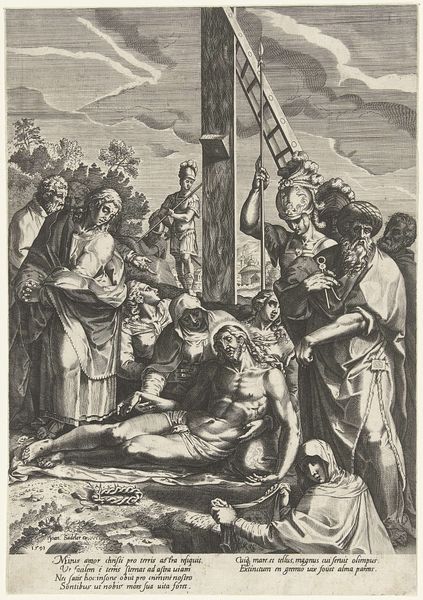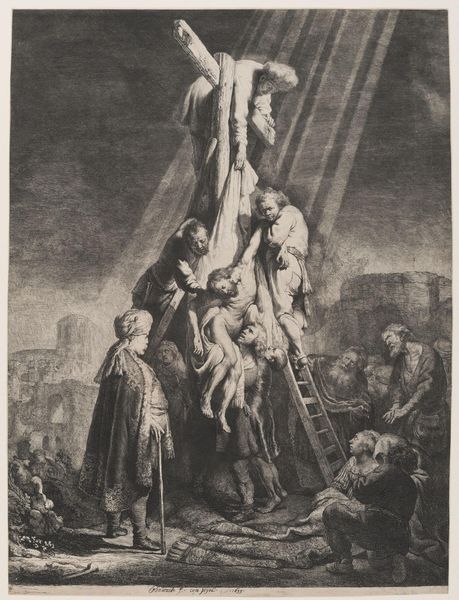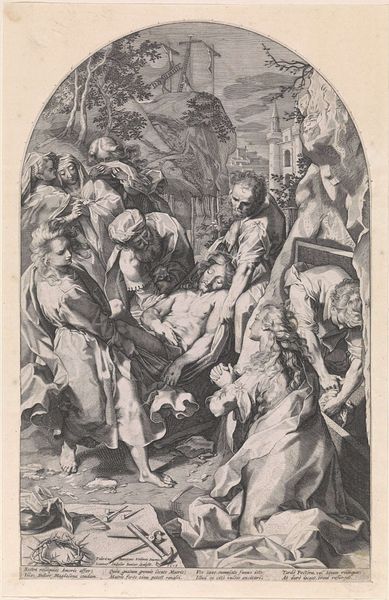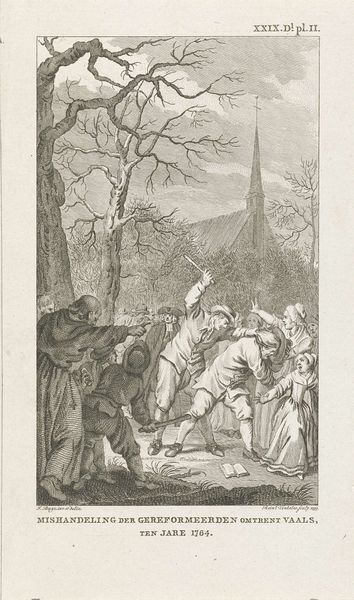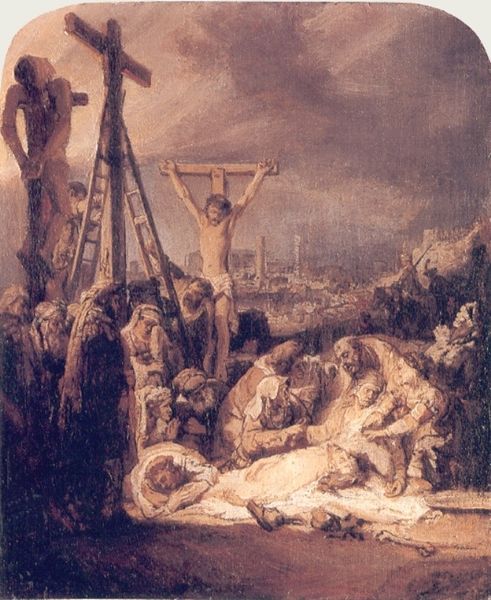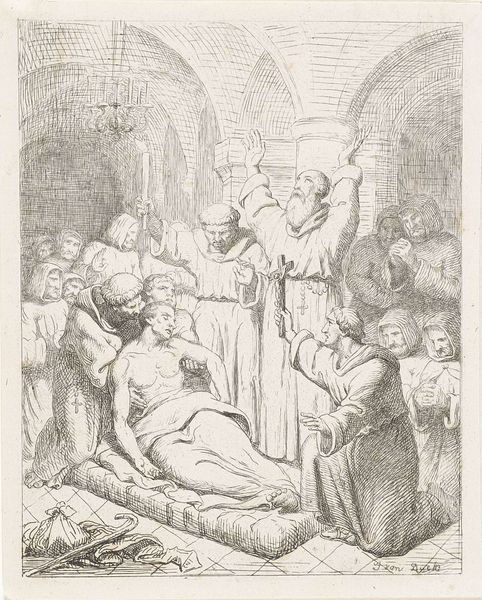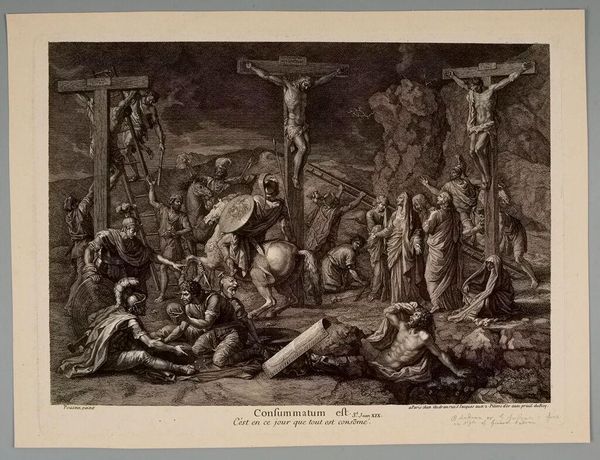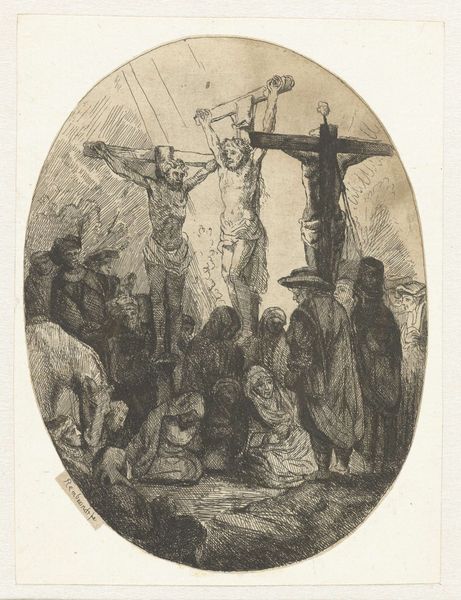
print, engraving
#
allegory
#
baroque
# print
#
old engraving style
#
figuration
#
line
#
history-painting
#
engraving
Dimensions: height 230 mm, width 186 mm
Copyright: Rijks Museum: Open Domain
Curator: The immediate emotional impact of this piece is intense grief. The scene pulses with sorrow, doesn't it? Editor: Absolutely. What we're looking at here is "The Lamentation of Christ," an engraving made around 1730 by Bernard Picart. It's part of the Rijksmuseum's collection, rendered in a delicate linear style that seems characteristic of Baroque prints. Curator: Line work, indeed. The density of it creates a remarkable sense of shadow and depth, which truly heightens the drama. All those figures huddling around Christ… Who are they? Editor: The composition depicts the moments after Christ's crucifixion. We see the body of Christ being mourned by his followers and family—figures that have carried profound symbolic weight throughout centuries. Mary, of course, but also perhaps Mary Magdalene and other devoted followers. Curator: It feels charged, politically even. Lamentation scenes have, historically, offered a space to critique power structures and question injustices. Was Picart commenting on something broader, socially? Editor: Certainly. Given the context of the Enlightenment bubbling up across Europe, depicting religious scenes offered a potent, albeit veiled, commentary on human suffering and the fragility of earthly power. Religious symbols become almost like coded messages. Curator: And the use of engraving itself? Was that medium just a practical choice for distributing imagery widely, or was there something more to it? Engravings facilitated broader circulation of these emotionally potent scenes and therefore also the ideals they embody. Editor: Engraving, with its meticulous lines and capacity for detail, carries a certain authority, a sense of permanence. Think of the Bible illustrations, legal documents—engraving imbued images with veracity and reinforced its symbolic message. It becomes deeply embedded in the cultural memory. Curator: That layering of meaning across subject matter and technique creates such resonance. I'm struck again by the sheer number of figures. The individual grief seems almost absorbed into collective sorrow, amplifying it. Editor: Exactly. Picart masterfully uses visual symbols to portray the psychological weight of the moment and the broader context within history, embedding this image into collective memory. Curator: The intersection of the historical moment, religious symbolism, and the printmaking tradition allows us to interpret themes of faith, doubt, and social responsibility through art. Editor: A powerful convergence of art and symbolic cultural narrative indeed.
Comments
No comments
Be the first to comment and join the conversation on the ultimate creative platform.

